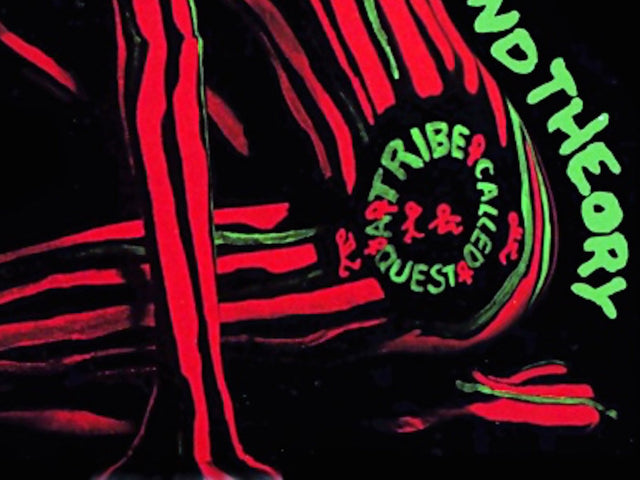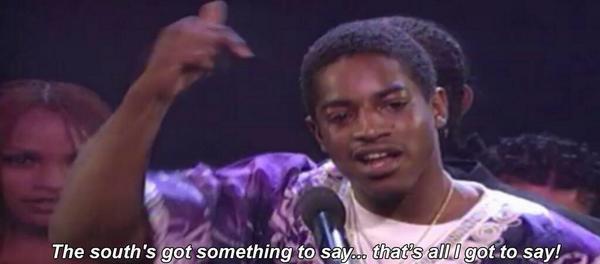Saya harap Anda sudah terbangun: 'Criminal Minded' dari Boogie Down Productions yang ke-30
A Rap Classic Turns 30
I. 9mm berbunyi
On May 30, 1988, the New York Times picked up an Associated Press item called “2 Youths Charged in Disc Jockey’s Slaying.” This is back when the Times style was teen-ager instead of teenager. The NYPD arrested Kendall Newland, an 18-year-old teen-ager from the Bronx, and charged him with second-degree murder in the killing of Scott Sterling, which had taken place almost exactly nine months prior, on University Ave, across from the High Bridge Homes projects, the Expressway, the railyard, the Harlem River. The other Youth charged was Cory Bayne, 17, who was already in custody after being accused of stealing subway tokens from turnstiles.
Scott Sterling was Scott La Rock, the DJ who, along with KRS-One, formed the backbone of Boogie Down Productions. They met when Scott was employed as a social worker at the Franklin Armory Men’s Shelter on 166th St. and Kris—he was just Kris—was claiming phony job interviews to tap into the stash of subway tokens the Armory kept to help its residents chase employment. Scott and Kris got in a shouting match; Kris called Scott a “house Negro.” They had to be separated by security.
That was about 1985. The history from that point is pretty well-documented: Scott started taking the still-homeless Kris, along with three other Youths (including D-Nice, who was only 15), 20-some blocks South to watch him DJ at the Broadway Repertoire Theatre. Before long, Scott and Kris were making songs of their own and leveraging Rock Candy Records to give them a subsidiary record label of their own. They cut a few demos, Mr. Magic dismissed them, they took Mr. Magic’s dismissal as a warning shot from Queens itself. With the help of Ced Gee (the Ultramagnetic MC’s co-founder—both Scott and Kris had been practicing on his equipment), they cut Criminal Minded, which came out in March of 1987. It was a fast success, so much so that Warner Bros. indicated they wanted to save BDP from the Rock Candy deal that had quickly gone sour.
But Scott wouldn’t live to sign the Warner deal. On August 26, he went with an envoy of people to High Bridge to mediate after D-Nice was beaten up for getting involved with another young man’s girlfriend. The planned intervention turned violent, though: while La Rock and a bodyguard were walking back to their red, drop-top Jeep after speaking with the friends of D-Nice’s tormentor, gunfire rained down. La Rock was hit with two bullets, one behind his ear and one in the neck.
He was admitted to Lincoln Memorial Hospital just after 11 p.m. At 5 p.m. the following day, his mother took him off life support. MC Serch, who arrived at the hospital around midnight, told XXL that KRS was pacing the hall, saying “We gotta keep going.”
II. The Crack Costs Money
Before we go any further, I should disclose a few things. I was born in 1992, and can’t speak with any sort of authority about what the South Bronx was like in 1987, or how often Red Alert played songs from Criminal Minded, or how it felt for Shan to be called out, or whether I would have reflexively sided with Marley Marl (I would have). I wasn’t there. The first major rap album I can give any sort of meaningful context is Get Rich or Die Trying. The first time I saw KRS-One was on a Beef DVD my friend stole from his step-brother. When I hear the “Children’s Story” melody I think of Mos Def and Puff before my brain switches over to Slick Rick. And the first time I heard the Zungguzungguguzungguzeng sample on “Remix for P is Free,” I thought, “Oh, Definition.’”
Beyond that, and without getting too indulgent, I’ll say that all the research, as it were, that I did when I was a kid was really just a dizzying amount of listening and reading second- and third-hand accounts of the Reagan years on dial-up internet. So there’s no original reporting here. On the other hand, this is not a piece where a writer “views Criminal Minded through the lens of 2017” or (God forbid) tries to draw connections between MCA and the Trump White House or etc.
But it’s important, or at least interesting, to look backward and see how a genre’s formative records navigated history themselves. And so “Remix” is a capsule biography of sorts: Kris skipping out of a crack den’s orbit, folding in pieces of Jamaica, of himself. Yellowman is there, and so is a 116th St. junkie.
And really, Criminal Minded was conceived as a battle over history. Even if Mr. Magic’s shoulder shrug was the catalyst, the BDP machine groaned to life to respond to “The Bridge,” which N.B.- is overlooked in most rap histories in favor of inferior songs from its era. “South Bronx” was less musically adventurous than “The Bridge,” but it was twice as vicious: see the shots at Shan’s ill-fated label deal, or “Instead of trying to take out LL/ You need to take your homeboys off the crack.” KRS added that he never heard “a peep” from Queens from ‘76 through ‘80, and that anyone claiming contrary in the Bronx would, well, not live.
So, without getting too deep into the weeds here, Shan responded with “Kill That Noise,” which gave way to “The Bridge is Over.” (Like Criminal Minded, Shan’s Down By Law had two songs from the crews’ back-and-forth. BDP split up “South Bronx” and “The Bridge is Over” on their record, but Shan opted to put “Kill That Noise” immediately after “The Bridge” on his.) “The Bridge is Over” was a pivotal moment for La Rock and—especially—for KRS, who made it distinctly Jamaican in a way that underscored the boroughs’ cultural divides. What’s more: he wrote the best rhyme of his life to that point, and for the first time seemed like a true peer of the Juice Crew’s.
In the years since all this unfolded, Shan has maintained that “The Bridge” was simply about how hip-hop in Queensbridge began, not how hip-hop (in the global sense) began in Queensbridge. That didn’t matter. In the matter of a few months, KRS had wrapped himself in Bronx lore, and semantics were no match for “Manhattan keeps on making it…” It was a holy war, and Kris drew the battle lines in radio waves and thin air.
III. I Hope You Are Awoken
On “Elementary,” Kris spells out KRS-One: knowledge reigns supreme over nearly everyone. He also lugs in a six-pack of Heineken, “I get tipsy.” Through the Clinton and W. Bush years, he slid into a professorial role, doling out wisdom and (more often, too often) scolding those who followed him onto wax. Remember the beef with Nelly?
But isn’t it kind of inspiring to look back and realize that KRS was always KRS? That Kris didn’t slowly compile knowledge and lived experience until he felt worthy of the mantle—that he built it from nothing, decided he was a teacher and made it so?
It’s tough to listen to Criminal Minded without imagining where Scott La Rock might be today—and without noticing the eerie similarities between his murder and the hypothetical laid out in “9mm.” And there are pieces (“Poetry,” the AC/DC sample on “Dope Beat,” the absolutely insane “Super Hoe,” where KRS brags about the strength of Scott’s erection) that don’t play at all today. But on a formal level, it’s one of rap’s towering achievements, not just a landmark that measures progress and marks the slow passage of time.
Criminal Minded is worth every re-listen you can squeeze into 2017, and not to mentally strip it for parts and track which were repurposed by the rappers who came later—even if that’s what KRS himself seems to advocate on the closing, title track:
“I’m not a musical maniac or b-boy fanatic
I simply made use of what was upstairs in the attic
I listened to these MCs back when I was a kid
but I bust more shots than they ever did.”
Criminal Minded is an amber-suspended snapshot of 1986 and ‘87, of Scott learning the tics of his equipment and Kris working out the kinks in his style, of D-Nice dedicating his adolescence to fine-tuning an impressively narrow skill set. Think back to the fact that fully twenty percent of this album is dedicated to a back-and-forth beef for which there are no contextualizing skits or interludes: this was made breathlessly, not with an eye to how it would sound in thirty years. And in doing so, BDP made something that won’t erode no matter how long it’s left out in the elements. See, kings lose crowns, but teachers stay intelligent.
Paul Thompson is a Canadian writer and critic who lives in Los Angeles. His work has appeared in GQ, Rolling Stone, New York Magazine and Playboy, among other outlets.
Bergabung dengan Klub!
Bergabunglah Sekarang, Mulai dari $44
Diskon eksklusif 15% untuk guru, mahasiswa, anggota militer, profesional kesehatan & petugas tanggap darurat - Dapatkan Verifikasi Sekarang!







